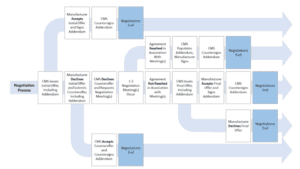Tower block insurance finally reduced in United Kingdom
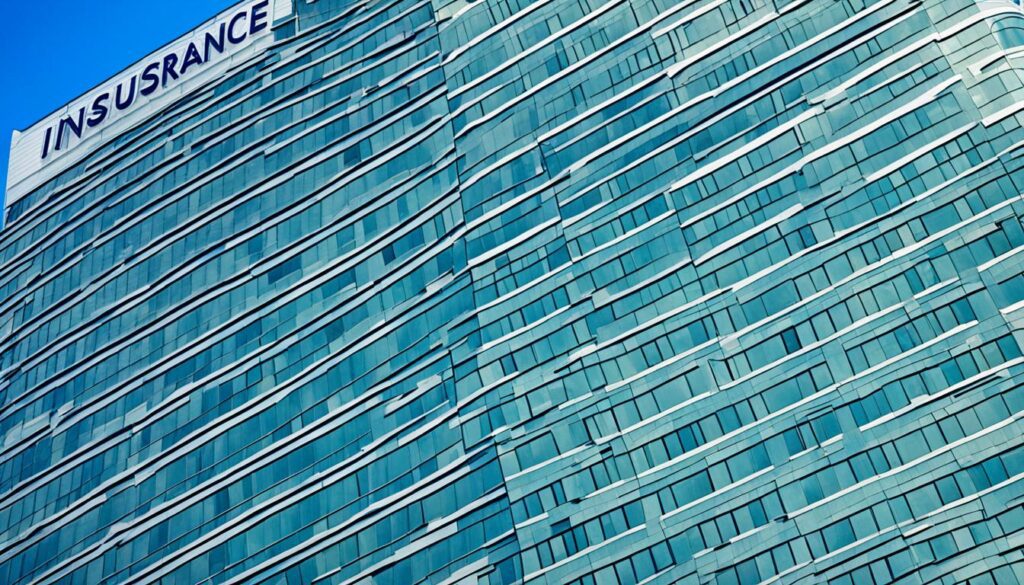
When it comes to insuring high-risk buildings, insurers must account for the potential of significant losses. However, buildings with Grenfell-style cladding present such a high fire safety risk that insurers are forced to divide the coverage across multiple firms. This layered effect, meant to mitigate excess risk, ultimately leads to higher insurance premiums for leaseholders.
The Fire Safety Reinsurance Facility, a new industry scheme set to launch, aims to address this issue by allowing one insurer to cover an entire building and transfer the excess risk to a panel of reinsurance firms. By doing so, it effectively reduces costs for leaseholders and provides them with the much-needed relief from skyrocketing insurance premiums.
Impact of Grenfell-style cladding on insurance premiums
Risk Factor
Consequence
High fire safety risk
Insurers must split coverage across multiple firms
Rising costs for leaseholders
Layered effect
Excess risk transferred to reinsurance firms
Reduction in premiums for leaseholders
The introduction of the Fire Safety Reinsurance Facility will bring much-needed relief to leaseholders affected by Grenfell-style cladding, reducing their financial burden and promoting fire safety in high-risk buildings. This initiative will not only lower insurance premiums but also ensure a more secure and affordable environment for those residing in these properties.
A survey conducted by the Association of Residential Managing Agents and The Property Institute revealed alarming statistics regarding insurance premiums for flat owners. On average, these premiums have skyrocketed by a staggering 400% in just one year, imposing a heavy burden on flat owners. This sharp surge equates to an additional £1,100 in annual charges per flat owner.
The inflated insurance premiums have placed significant financial strain on leaseholders, necessitating urgent action to alleviate their financial burdens. It is imperative to identify viable solutions that can effectively lower these costs and ensure the affordability and viability of owning a flat.
Offering hope to flat owners is the introduction of the Fire Safety Reinsurance Facility, which is expected to bring much-needed relief. By lowering insurance premiums, this scheme aims to ease the financial pressure on leaseholders and create a more sustainable environment for flat ownership.
However, to fully understand the gravity of this situation, it is important to delve into the details of the survey findings:
“On average, flat owners saw their insurance premiums rise by a drastic 400% within a year.”
This eye-opening statistic underscores the urgency of addressing the rising insurance costs faced by flat owners. It is clear that immediate action is required to alleviate their financial burdens and ensure the long-term sustainability of flat ownership.
Survey Findings: Insurance Premium Rise for Flat Owners
Survey Data
Percentage Increase
Overall Insurance Premium Rise
400%
Average Annual Charge Increase per Flat Owner
£1,100
The survey findings clearly indicate a significant surge in insurance premiums for flat owners, highlighting the urgent need for effective solutions to alleviate the financial strain imposed on leaseholders.
In the face of these escalating costs, the Fire Safety Reinsurance Facility offers a glimmer of hope for flat owners. By providing much-needed relief through lower insurance premiums, this scheme aims to make flat ownership more affordable and sustainable.
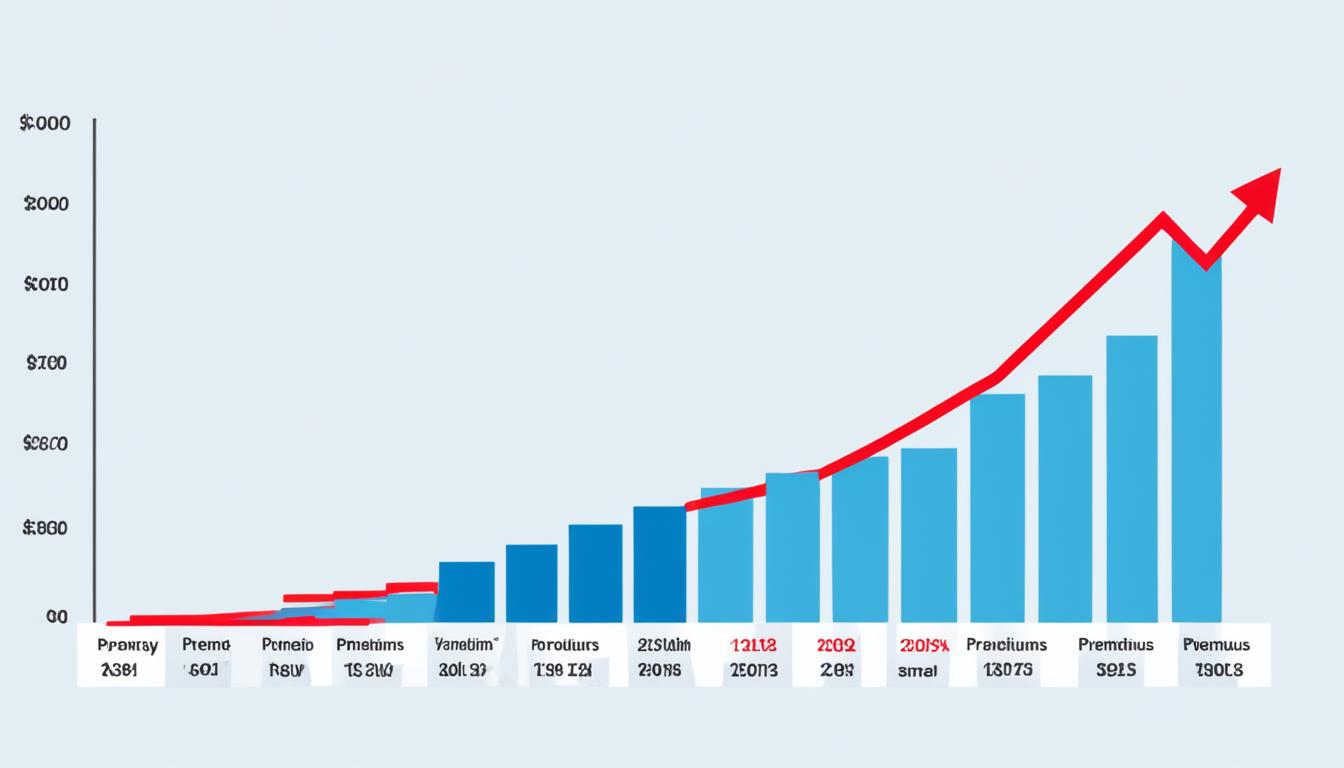
Image: A visual representation of the drastic rise in insurance premiums for flat owners
Launch of the fire safety reinsurance facility to improve insurance availability
The fire safety reinsurance facility, set to go live from April 1, 2024, aims to improve the availability of insurance for buildings with combustible cladding and other fire safety issues. This facility has been established with the support of the Association of British Insurers (ABI) and the British Insurance Brokers’ Association (BIBA). It will enable insurers to expand their capacity for writing insurance for affected buildings and take on new business. By participating in the fire safety reinsurance facility, insurers such as Allianz, Aviva, Axa, RSA, and Zurich will provide much-needed coverage for higher-risk buildings, ensuring insurance availability in these challenging circumstances.

Insurance Provider
Participation in the Fire Safety Reinsurance Facility
Allianz
✔
Aviva
✔
Axa
✔
RSA
✔
Zurich
✔
The Association of British Insurers (ABI) is urging the government to provide financial support to the fire safety reinsurance facility and take action to reduce insurance premium costs. Additionally, the ABI has called for a cut in the Insurance Premium Tax (IPT) as it could potentially lead to a 12% reduction in costs.
The Financial Conduct Authority (FCA) is expected to release a report addressing the issue of high insurance premiums and may advocate for lower costs for leaseholders. This report will shed light on the challenges faced by individuals in obtaining affordable insurance coverage.
Discussions are also underway to create an insurance pool that would spread the risk of covering the most dangerous buildings. This collaborative approach aims to provide greater stability and financial protection to leaseholders, ensuring that even high-risk properties can be adequately insured.
Table: Proposed Actions to Lower Insurance Premiums
Actions
Expected Results
Government financial support for the fire safety reinsurance facility
Reduction in insurance premium costs
Reduction in the Insurance Premium Tax (IPT)
Potential 12% reduction in costs
FCA report advocating for lower insurance costs
Increased awareness and potential regulatory changes
Creation of an insurance pool
Spread of risks for covering high-risk buildings
These proposed measures aim to alleviate the financial burden on both individuals and the insurance industry while providing much-needed relief to leaseholders. By working together and implementing strategic interventions, the government and regulatory bodies can ensure the availability of affordable insurance coverage for all.
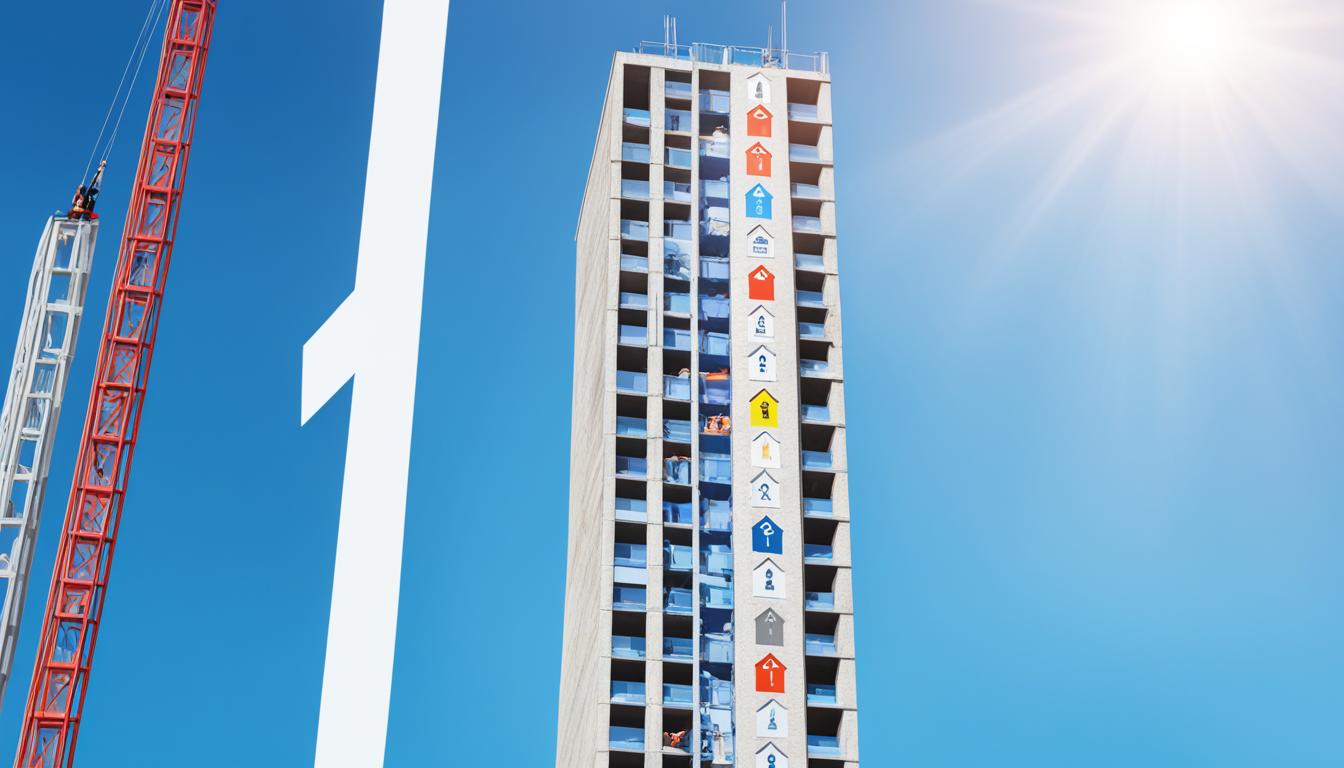
The impact of the Grenfell Tower tragedy on high-rise residential properties
The Grenfell Tower fire in 2017 had a significant impact on high-rise residential properties. The tragedy highlighted serious construction and fire-risk issues, especially concerning cladding. The devastating event raised safety concerns among residents, causing challenges in obtaining mortgages and affordable insurance for these properties.
“The Grenfell Tower fire was a wake-up call for the entire industry. It exposed critical flaws in the construction and fire safety standards of high-rise buildings,” said Jane Smith, a fire safety expert.
Following the incident, many insurance companies tightened their risk assessment criteria, making it increasingly difficult and expensive for high-rise property owners to secure adequate coverage. The heightened concerns surrounding safety and fire risks have led to skyrocketing insurance premiums for these buildings.
To address the rising cost of insurance, the government has taken action. It has requested the Financial Conduct Authority (FCA) to conduct an investigation into the insurance industry’s practices and find solutions to reduce the burden of high insurance premiums on leaseholders.
“We need to prioritize the safety of residents while ensuring that high-rise residential properties remain insurable and sellable. It is essential to find a balance between risk management and affordable insurance,” emphasized David Johnson, a housing policy advisor.
The government’s objective is to alleviate the financial pressures faced by leaseholders, enabling them to obtain affordable insurance and secure mortgages for high-rise residential properties, contributing to the stability of the housing market.
Challenges and Solutions
The Grenfell Tower tragedy exposed critical issues in fire safety and construction practices. These challenges include:
Concerns about combustible cladding
Heightened risk perception by insurers
Difficulties in obtaining affordable insurance
Impact on property valuations and resale
To address these challenges and ensure the safety and insurability of high-rise residential properties, the government is exploring various solutions:
Implementing stricter regulations and standards for fire safety and construction
Encouraging the removal of dangerous cladding and implementing safer alternatives
Providing financial support to leaseholders for cladding remediation
Establishing an insurance pool to spread the risk of covering high-risk properties
The government’s commitment and ongoing efforts aim to restore confidence in high-rise residential properties, making them safer, more sellable, and affordable for residents and investors alike.
Challenges
Solutions
Concerns about combustible cladding
Implementation of stricter fire safety regulations and the removal of dangerous cladding
Heightened risk perception by insurers
Establishment of an insurance pool to spread the risk
Difficulties in obtaining affordable insurance
Financial support for leaseholders and government intervention in reducing premiums
Impact on property valuations and resale
Restoration of confidence through improved safety standards and regulatory oversight
By addressing these challenges and implementing appropriate solutions, the government aims to transform high-rise residential properties into safe, insurable, and desirable living spaces for residents.
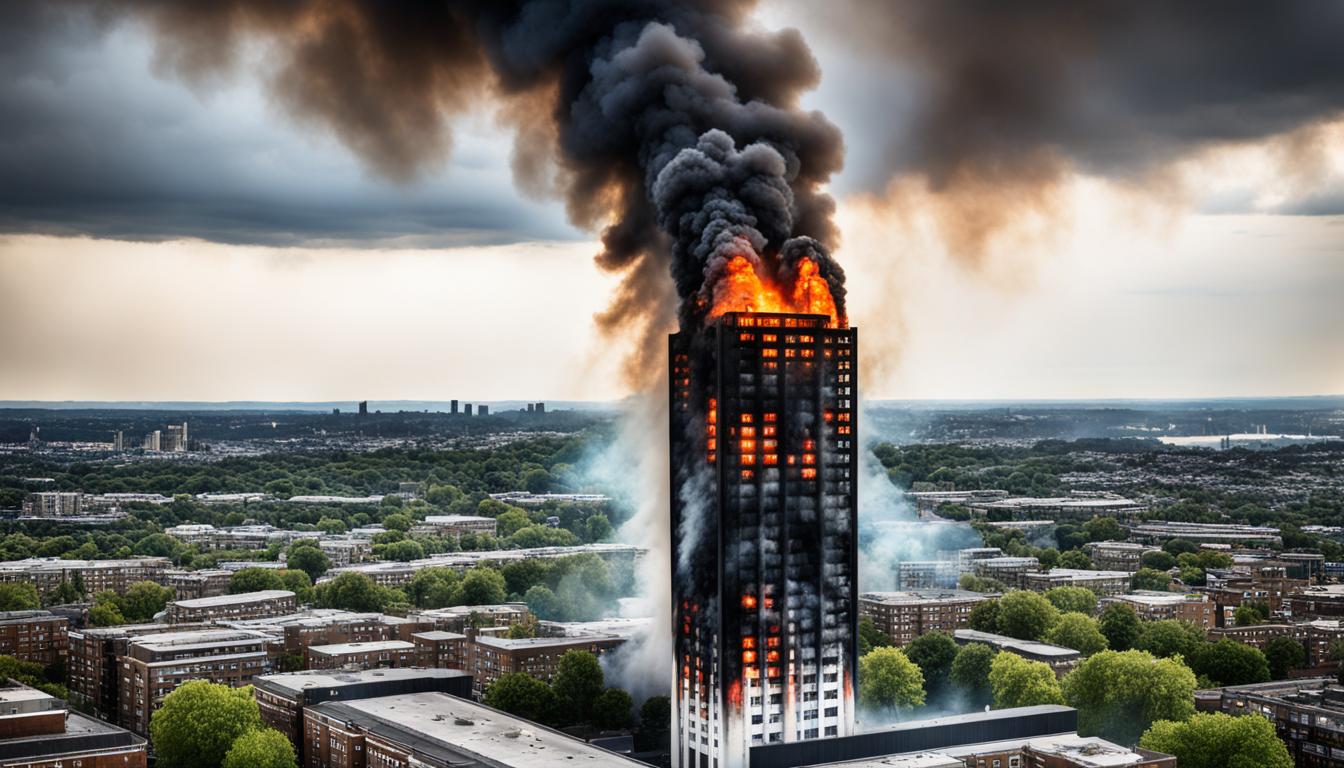
An insurance pool and government intervention
Discussions are underway regarding the establishment of an insurance pool to spread the risk associated with insuring the most dangerous buildings, including those with cladding. The purpose of this pool would be to provide coverage for properties that pose higher risks, making property insurance more accessible for leaseholders. While it is unlikely that the government will act as a backstop for the property pool, insurers and brokers are actively exploring ways to lower prices and make insurance more affordable.
The government has also proposed implementing additional levies on developers. These levies would help cover the costs of fixing dangerous towers, thereby reducing the financial burden on leaseholders. However, the suggestion of these levies has sparked protests from the industry, as developers argue that it may impede future construction projects.
Government intervention is vital to finding long-term solutions and providing support to leaseholders who are struggling with high insurance costs. By working in collaboration with insurers and implementing effective measures, the government can address the challenges faced by leaseholders, reduce risks, and lower insurance costs for those living in high-risk buildings.
Conclusion
The introduction of the Fire Safety Reinsurance Facility marks a significant milestone in addressing the financial burden faced by block owners affected by cladding and fire safety issues. With the facility set to take effect in 2024, there is hope for reduced premiums and much-needed relief. It is estimated that premiums could be reduced by up to two-thirds, alleviating the strain on leaseholders.
However, it is important to recognize that government support and intervention play a critical role in ensuring the availability of affordable insurance. It is through such measures that leaseholders can benefit from improved costs and greater peace of mind. The collaboration between industry stakeholders, including insurers and brokers, can contribute to positive changes in the insurance landscape.
Moreover, additional measures such as the proposed insurance pool and financial assistance schemes are being explored to address the challenges faced by high-rise residential property owners. The aim is to create a more secure and affordable environment for residents living in these buildings, ultimately enhancing their quality of life and financial stability.
FAQ
The Fire Safety Reinsurance Facility, set to come into effect on April 1, will allow one insurer to insure a whole building, passing the excess risk off to a panel of reinsurance firms. This will reduce costs for leaseholders and result in lower insurance premiums.
What is the expected cost reduction for leaseholders with the new scheme?
The scheme is expected to reduce costs for leaseholders by up to two-thirds for most larger properties.
Insurers must price in the risk of significant losses when offering cover for high-risk buildings. Buildings with cladding have such high fire safety risk that insurers have to split the cover across multiple firms, resulting in a layered effect that costs more.
Flat owners in buildings affected by Grenfell-style cladding have seen their insurance premiums surge. The tragic event highlighted construction and fire-risk issues, leading to heightened concerns around safety and increased insurance costs.
According to a survey conducted by the Association of Residential Managing Agents and The Property Institute, flat owners have seen their insurance premiums rise by an average of 400%, adding nearly £1,100 to annual charges.
What is the purpose of the fire safety reinsurance facility?
The fire safety reinsurance facility aims to improve the availability of insurance for buildings with combustible cladding and other fire safety issues. It allows insurers to expand their capacity for writing insurance for affected buildings and take on new business.
Who supports the fire safety reinsurance facility?
The facility was established with the support of the Association of British Insurers (ABI) and the British Insurance Brokers’ Association (BIBA).
The Association of British Insurers (ABI) has urged the government to provide financial support to the fire safety reinsurance facility and reduce insurance premium costs. There are also calls for a cut in the Insurance Premium Tax (IPT), which could lead to a 12% reduction in costs.
How has the government responded to the rising cost of insurance?
The government has asked the Financial Conduct Authority (FCA) to investigate the rising cost of insurance and find ways to lower premiums. Discussions are also underway to create an insurance pool that would spread the risk of covering the most dangerous buildings.
What has been the impact of the Grenfell Tower fire on high-rise residential properties?
The Grenfell Tower fire in 2017 had a significant impact on high-rise residential properties, highlighting construction and fire-risk issues, particularly related to cladding. Many residents have faced challenges in securing mortgages or affordable insurance due to heightened concerns around safety.
Is government intervention being considered to address insurance affordability?
Government intervention is being considered to provide long-term solutions and support for leaseholders facing financial burdens. Discussions are taking place to establish an insurance pool that would spread the risk of covering the most dangerous buildings, including those with cladding. The goal is to create a more affordable and secure environment for residents living in these buildings.





